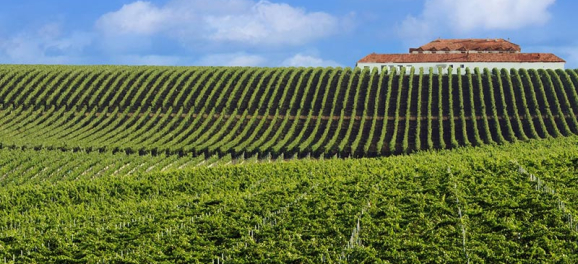Off the Beaten Track

If you were asked which countries produced quality wine. No doubt you would say at least a handful of these countries… France, Spain, Portugal, Italy, America, Argentina, Chile, Australia, or New Zealand just to name a few. All very well-known wine producing countries that many of us will have tried wine from.
But what about off the beaten track? Those lesser-known wine producing countries that are producing some stunning wines at very reasonable prices. Germany, Romania, Lebanon and Sicily are just some of the off the beaten track countries that we stock wine from. With a bit of luck and a lot more tasting we can hopefully add to this list of countries that have some brilliant wines.
The home of Transylvania and Bram Stoker’s character, Dracula, the Transylvanian Count who had a penchant for sucking blood. Vlad Tepes or as we know him as Vlad the Impaler the ruthless ruler of Wallachia who was named for his preferred form of torture and once impaled ordered 20,000 defeated Ottomans to be impaled on wooden stakes outside the city of Târgoviște. It may be known for its darker ages in history and its fictional characters but the wine making tradition in Romania is a long and noble one. The first records of viticulture in the Banat region date back to the Roman invasion of Dacia in the First Century AD, but legend tells of Bacchaus, the God of Wine, spending his childhood there. More recent history shows that the vineyards used for Umbrele were already renowned by 1447, when the lord of Severin Mihall de Ciorna purchased the vineyards for 32 Hungarian gold florins. Despite how long viticulture has been present in Romania due to the lack of money, expertise and resources the wine has struggled with popularity. Remarkably Romania has been producing wine for the same amount of time as France and is among the top 10 countries in the world with regard to area under vine and wine production.
Regardless, Englishman Philip Cox and his wife have replanted some of the vines in the 700 hectare Cramele Recas vineyard on the rolling hills in Viile Timisului, along with a new winery and a 20 million euro investment has enabled the vineyard to produce a variety of superb, well priced Calusari wines. Calusari named after a secret Romanian fraternal sect whose dance is said to look like they are flying through theair. They were also said to be able to cure the victims of fairies but that, I suspect has more to do with the Romanians love of wine! Not only do we have Romanian Calusari wines in stock we also have Umbrele Wine also from ViileTimisului, Romania when the lord of Severin Mihall de Ciorna purchased the vineyards for 32 Hungarian gold florins in 1447 with the large investment it has allowed for the Cramele Recas vineyard to produce beautifully fresh and fruity wines at very reasonable prices.
Lebanon’s wine making history dates back 1,000 of years. In the city of Baalbek, in the Bekaa Valley, an astonishingly intact second-century temple to Bacchus, Roman god of wine, holds a dramatic mirror to wine’s cultural significance in this part of the world. Fast forward to 1857, when French Jesuit monks planted Cinsault vines in the Bekaa Valley, the presence of the French between the World Wars cemented a wine culture in the country. Today, Lebanon has come a long way in focusing on its wine production. On an average, close to 6m cases of wine are produced in this country every year.
Gaston Hochar's celebrated Château Musar was a late arrival on the wine making scene, in 1930, but its meteoric rise has seen it become one of the iconic Lebanese wines in the Western markets. Despite the adverse effects from the frequent conflicts in the region (chiefly vineyard destruction and immigration), the resilience and dedication of Lebanon's winemakers has kept wine making traditions there alive.
Off the beaten track in Spain… Extremadura. A place that only a true wine connoisseur may have heard off. With sometimes as little as 400 ml of rain throughout the year and summers that are very long andvery dry with average temperature in the late 30s. All this lack of rain and stony/gravel like ground is not conducive for growing vines. Yet somehow, they have managed to do so. The Coloma Family Amelia, Felix and Helena our exclusive Extremadura wine producers have sown grapes that grow in this area and in particular the grapes grown on their Evandria vineyards develop high quality and reach great potential, giving rise to wines that exhibit an exceptional personality and style. The soil where Evandria vineyard stands used to be a lake, therefore rocks and stones are predominant. These stones and rocks have been shaped along the years by the river Guadiana creating round pebbles. Evandria’s both stony and sandy soil can keep the heat during the day, then releasing it at night; this has an accelerating effect on the maturation of grapes. The grape harvest may start at the end of July, among the earliest in the Northern Hemisphere. These wines simply put are brilliant. I hope that all of you get a chance to try some of the wines from off the beaten track. Incredible wines for incredible prices!

